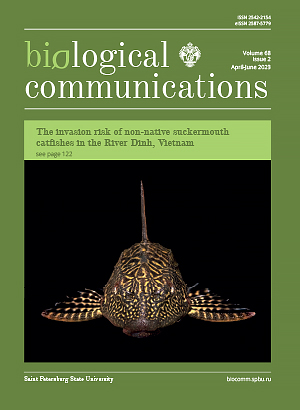Ontogeny and miniaturization of Alvarezsauridae (Dinosauria, Theropoda)
DOI:
https://doi.org/10.21638/spbu03.2023.201Abstract
The ontogenetic status of the known specimens of alvarezsaurid theropod dinosaurs is revised. We present histological data that the holotype of Parvicursor remotus from the Upper Cretaceous Barungoyot Formation of Mongolia is not an adult individual, as previously thought, but a juvenile less than one year old. The miniaturization took place only in the Late Cretaceous Asiatic Parvicursorinae, whereas the Late Cretaceous South American non-parvicursorine alvarezsaurids were large animals. The miniaturization occurred by shifting ossification to earlier ontogenetic stages, in particular, by the closure of the neurocentral sutures on the presacral vertebrae of juvenile animals. There is no morphological support for the myrmecophagy in the alvarezsaurids and a shift to a myrmecophagous ecological niche does not explain the need for miniaturization.
Keywords:
Dinosauria, Theropoda, Alvarezsauridae, ontogeny, miniaturization
Downloads
References
Downloads
Published
How to Cite
License
Articles of Biological Communications are open access distributed under the terms of the License Agreement with Saint Petersburg State University, which permits to the authors unrestricted distribution and self-archiving free of charge.





